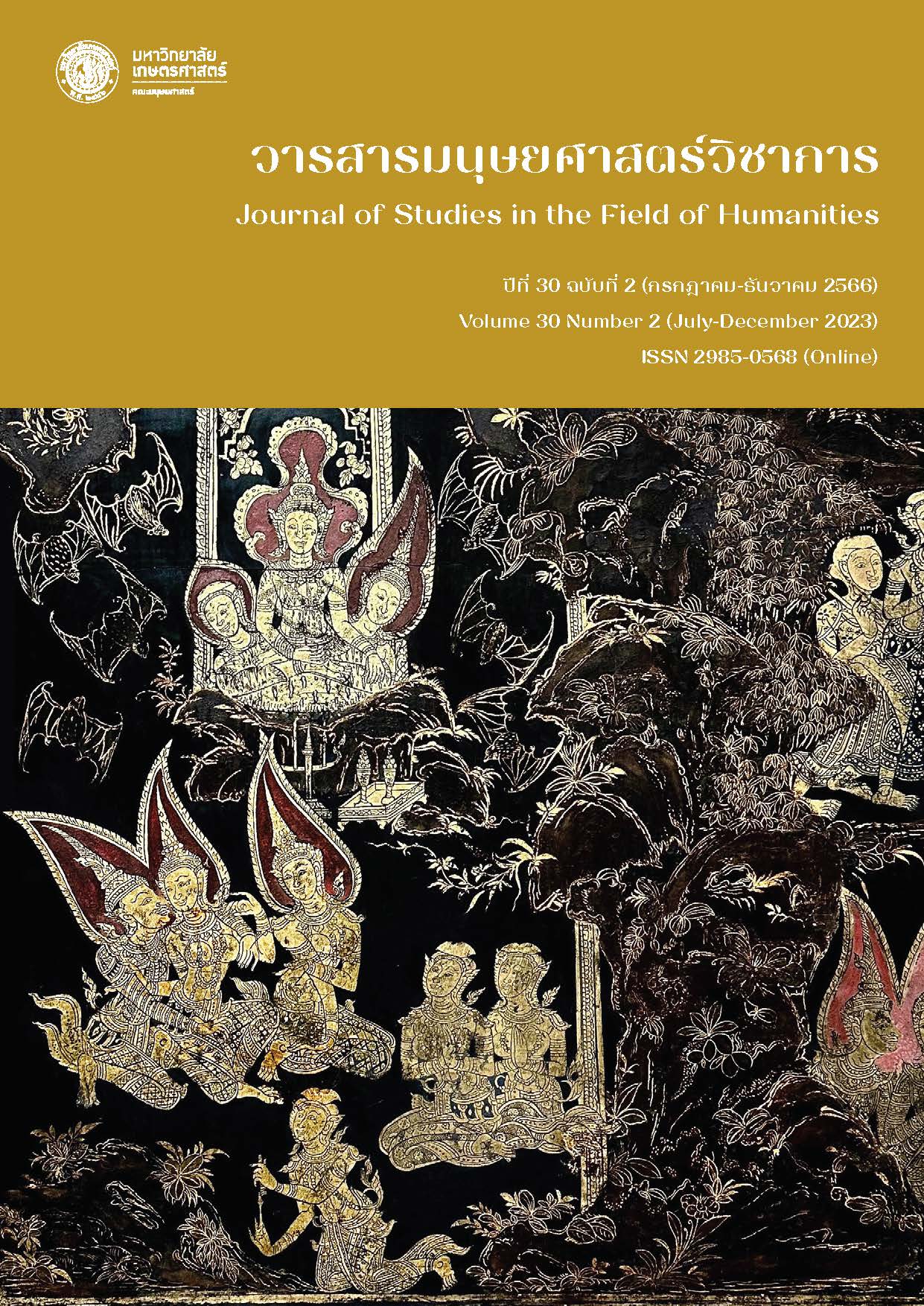The Historical Development of Thai Vocal Singing of Burapha Phirom Palace
Main Article Content
Abstract
This article aimed to investigate the historical development of Thai vocal singing of Burapha Phirom Palace through the court singers. It identified 10 court singers of Burapha Phirom Palace which include 2 groups: 1) 6 guest singers namely, Luang Klomkosolsub (Chon Soonthornket), Phra Phrompreecha (Klin Chanruang), Khun Likitsunthornkarn (Yin Mrigavesa), Luang Siangsanokhun (Pun Muktavaphai), Lady Rambundhit Sitthiseranee (Yiam Suwong), and Mrs. Thongdee Sunamalai; and 2) 4 regular singers namely, Mrs. Juea Chanyanatya, Mrs. Jian Chanyanatya, Lady Mahathepkasatsamuha (Banleng Sagarik) and Mrs. Jimlim Kulatan (Thanakom).
Thai singing style of Burapha Phirom Palace was characterized by its pluralism in terms of diversity, democracy, and respect to one another. The development and integration of singing approaches adhered to common basics. The singing approach of each singer is thus distinct by their voice potential as uniqueness. Vocal singing of Burapha Phirom Palace has the main objective for competition especially for Phleng Sepa, Phleng Sam Chan, and Phleng Thao, so they were adjusted according to the competition rules. Sometimes their singings had been developed upon the superior’s command. Since the 1932 governance reform, musicians and singers of Burapha Phirom Palace were transferred to several government offices such as Thai Music Division of the Fine Arts Department, other different music divisions under the Royal Thai Army, music institutions such as School of Musical and Dramatic Performance (The College of Dramatic Arts) of Chulalongkorn University, Kasetsart University, Srinakharinwirot University, Suan Sunandha Rajabhat University, etc. Some of them taught music at home and later opened a music school which included Master Petch Chanyanatya Music School in Ayutthaya Province, Master Ruam Phromburi Music School in Rachaburi Province, for example. A significant music school belonged to Luang Pradit Pairoh (Sorn Silapabanleng) in Phranakorn district of Bangkok. The singing approaches of Burapha Phirom Palace was inherited and continued to develop overtime so as to disseminate the knowledge to general people and later on all over the country as well. Their approaches are easy to practice, understand, and listen to, and lead to a common understanding as the “Phranakorn” singing style.
Article Details

This work is licensed under a Creative Commons Attribution-NonCommercial-NoDerivatives 4.0 International License.
References
กาญจนา อินทรสุนานนท์. (2540). เทคนิคการขับร้องเพลงไทย. กรุงเทพฯ: ภาควิชาดุริยางคศาสตร์ไทย มหาวิทยาลัยศรีนครินทรวิโรฒ ประสานมิตร.
ท้วม ประสิทธิกุล. (2535). วิธีขับร้องเพลงไทยให้ไพเราะ. กรุงเทพฯ: อมรินทร์พริ้นติ้งกรุ๊ป.
บุตรี สุขปาน. (2561). การขับร้องเพลงไทย: เพลงตับ. ขอนแก่น: คลังนานาวิทยา.
พงษ์ศิลป์ อรุณรัตน์. (2565). สังคีตวิเคราะห์. นครปฐม: มหาวิทยาลัยศิลปากร.
พูนพิศ อมาตยกุล. (2551). จดหมายเหตุดนตรี 5 รัชกาล งานวิจัยเอกสารและลำดับเหตุการณ์ พุทธศักราช 2411-2549. กรุงเทพฯ: เดือนตุลา.
มูลนิธิเล็ก-ประไพ วิริยะพันธุ์. (2559, 28 มกราคม). แนวคิดเรื่องพหุนิยมเบื้องต้น. สืบค้นเมื่อ 9 กรกฎาคม 2566 จาก https://lek-prapai.org/home/view.php?id=443.
ศิริรัตนบุษบง, พระเจ้าวรวงศ์เธอ พระองค์เจ้า และพูนพิศ อมาตยกุล. (2524). ทูลกระหม่อมบริพัตรกับการดนตรี. กรุงเทพฯ: จันวาณิชย์.
อานันท์ นาคคง และอัษฎาวุธ สาคริก. (2544). หลวงประดิษฐไพเราะ (ศร ศิลปบรรเลง) มหาดุริยกวีลุ่มเจ้าพระยาแห่งอุษาคเนย์. กรุงเทพฯ: มติชน.


